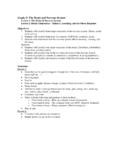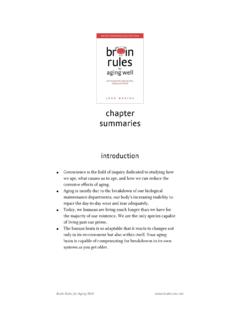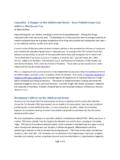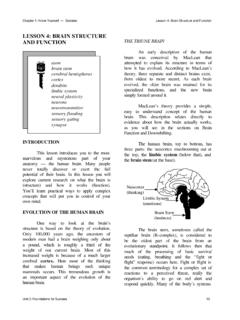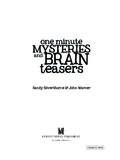Transcription of Assessment of Traumatic Brain Injury - Nashia
1 RESOURCE PACKET. Assessment of Traumatic Brain Injury GUIDELINES FOR REFERRAL DETERMINATION OF NEED FOR EVALUATION To best meet the needs of a student with a Traumatic Brain Injury (TBI), the evaluation team needs to be familiar with the medical and educational definitions of Traumatic Brain Injury , the stages of improvement from a Traumatic Brain Injury , the severity classifications of Traumatic Brain Injury and the child's pre Injury levels of functioning ( academic levels, social/emotional functioning, utilization of Special Education services, etc.). The referral process for Special Education services should be started for any student with a medical diagnosis of TBI, supported by a letter from a licensed physician, which documents the Injury .
2 There is a subset of children that may or may not require Special Education services. These are children with a Mild Traumatic Brain Injury (MTBI). Special issues related to this subset of children will be discussed later in this chapter. Clinical Definition of Traumatic Brain Injury The Brain Injury Association of America defines a Traumatic Brain Injury as an insult to the Brain , not of degenerative or congenital nature, caused by an external physical force that may produce a diminished or altered state of consciousness, which results in an impairment of cognitive abilities or physical functioning. It can also result in the disturbance of behavioral or emotional functioning. The reader is referred to the Federal and State definition of Traumatic Brain Injury in Section I of this manual.
3 Stages of Improvement Cognitive Perspective Improvement from a Traumatic Brain Injury can be divided into three phases. The stages of improvement will be discussed as separate and distinct stages however, an individual's progression through stages of improvement from a TBI is highly individualized and does not always follow a stair step progression. The reasons for this vary from the overall severity of the Injury , the type of medical care received by the child, the child's pre Injury health, etc. A Traumatic Brain Injury can impact a student's cognitive, physical, and/or social and emotional skills. For the purposes of determining if a student needs an evaluation for Special Education services, the Stages of Improvement will be discussed from a cognitive perspective.
4 The stages of improvement are broken into the Early Phase of Improvement, Middle Phase of Improvement, and Late Phase of Improvement (Ylvisaker & Szekeres, 1998). ED Traumatic Brain Injury Resource Packet Department of Education Early Phase of Recovery This phase of improvement includes the period from early medical stabilization to consistent responsiveness to environmental events (Ylvisaker & Szekeres, 1998). This phase generally occurs in a hospital setting and may last for hours, days or weeks and in some cases may persist indefinitely (Ylvisaker & Szekeres, 1998). The following descriptors are characteristic of a child/adolescent in the early phase of improvement. severely decreased arousal/alertness no evidence of encoding or storage of new information minimal awareness of self and current condition marginally purposeful activity little to no assistance given for daily care severely limited communication profound confusion or disorientation to person, place, time and condition Middle Phase of Improvement The middle phase of improvement is characterized by the child/adolescent being alert and responsive however, the child/adolescent is typically confused and disoriented.
5 The child/adolescent may be receiving inpatient rehabilitation services at this time although it is not unusual for a child/adolescent in this phase of improvement to be at home and return to school. The following descriptors are characteristic of a child/adolescent in the middle phase of recovery short attention span recognition of information is stronger than free recall impulsivity, severely impaired safety and social judgment poor awareness of deficits severely impaired learning of new skills confabulation impaired social perception general slowness Late Phase of Improvement At this phase of improvement, most children and adolescents are generally oriented, goal directed and demonstrate purposeful behavior. The child/adolescent will typically be in school by this time.
6 The following descriptors are characteristic of a child in the late phase of improvement: weak concentration, memory problems, fair to good concrete reasoning in controlled settings, poor safety and social judgment, often normal digit span, shallow awareness of residual deficits, mild to severe deficits in executive functions, and generally goal directed behavior, but goals possibly unrealistic. ED Traumatic Brain Injury Resource Packet Department of Education Severity Level of TBI from a Medical Perspective Determining the severity level of a Traumatic Brain Injury is difficult. The following tools are routinely utilized to determine the severity of the initial Injury : Glasgow Coma Scale (GCS) the length of coma, and the length of Post Traumatic Amnesia (PTA).
7 This information is routinely found in the History and Physical Discharge Report completed by the treating physician during the acute hospitalization. The GCS is a scale utilized by physicians at the time of Injury and shortly after to determine the severity of Injury and to note improvement or deterioration. The GCS consists of three subtests: best eye, best verbal and best motor response. Scores on the GCS have a range of three (no response) to fifteen (alert and oriented). The following is the severity level of a TBI as rated by the GCS: Mild GCS 13 15 Moderate GCS 9 12 Severe GCS 3 8 The length of coma is also utilized to help identify the severity level of a Traumatic Brain Injury . Research has found that six hours or more of coma indicates a severe Traumatic Brain Injury (Christensen, 2001).
8 The International Classification of Diseases classifies severity of Traumatic Brain Injury as follows: Mild less than one hour of coma Moderate 1 24 hours of coma Severe 24 or more hours of coma The length of the period of post Traumatic amnesia (PTA) is the third major predictor of severity of a Traumatic Brain Injury . Post Traumatic amnesia is the period of time following the initial Injury characterized by confusion and disorientation and the inability to remember ongoing events. Many rehabilitation professionals feel that the length of PTA is the most useful indicator of the severity of the TBI. Mild <1 hour Moderate 1 24 hours Severe 1 7 days Very severe >7 days ED Traumatic Brain Injury Resource Packet Department of Education MILD Traumatic Brain Injury The following definition of Mild Traumatic Brain Injury was developed by the Mild Traumatic Brain Injury Committee of the Head Injury Interdisciplinary Special Interest Group of the American Congress of Rehabilitation Medicine.
9 It was formally published in the Journal of Head Trauma Rehabilitation 1993:8(3): 86 87. The definition is: A patient with mild Traumatic Brain Injury is a person who has had a traumatically induced physiological disruption of Brain function, as manifested by a least one of the following: 1. any period of loss of consciousness 2. any loss of memory for events immediately before or after the accident 3. any alteration in mental state at the time of the accident ( , feeling dazed, disoriented, or confused) and 4. focal neurological deficit(s) that may or may not be transient but where the severity of the Injury does not exceed the following: post Traumatic amnesia (PTA) not greater than 24 hours. after thirty (30) minutes, an initial Glasgow Coma Scale (GCS) of 13 15 and loss of consciousness of approximately 30 minutes or less.
10 Symptoms of a Mild Traumatic Brain Injury a. cognitive deficits a reduction in attention, concentration, perception, memory, speech/language or executive functioning skills that cannot be completely accounted for by emotional state or other causes b. behavioral changes and emotional changes irritability, quickness to anger, disinhibition and/or emotional lability that cannot be accounted for by a psychological reaction to physical or emotional stress or other causes and c. physical symptoms including nausea, vomiting, dizziness, headache, blurred vision, sleep disturbance, fatigue or other sensory loss that cannot be accounted for by peripheral Injury or other causes. ED Traumatic Brain Injury Resource Packet Department of Education Red Flags Ylvisaker, Feeney & Mullins (1995) provide a list of Red Flags to assist educators in identifying students with a Mild Traumatic Brain Injury .


